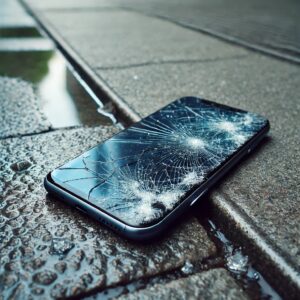For years, ruggedized smartphones and tablets have been promoted as the gold standard for frontline policing. But real-world experience paints a very different picture—one where commercial-grade devices not only hold their own but actually outperform their ruggedized counterparts in cost, flexibility, and usability.

The Durability Myth
Let’s start with the basics: frontline officers take care of their gear. Breakage rates of issued smartphones are low, and even when damage occurs, the cost of replacing a standard commercial device is a fraction of the procurement and maintenance cost of ruggedized hardware. For agencies operating under tight budgets, this difference matters.
What’s more, modern smartphones are far more resilient than they’re given credit for. Cases and screen protectors provide sufficient durability for most patrol environments—without the bulk or obsolescence of specialized equipment.
Tech That Keeps Up with the Job
Police work is evolving fast. So are the expectations of officers in the field. New apps, AI-enhanced tools, faster network standards, and modern UX design all demand up-to-date devices.
Ruggedized phones have been notorious for lagging behind in specs. By the time they’re approved, procured, and deployed, they’re often already outdated. This creates friction. Officers are forced to use limited tools in high-stress environments where speed and precision are critical.
Agencies adopting a two-to-three year upgrade cycle for commercial devices can better keep pace with operational needs—while keeping officers empowered and efficient.
Operational Discretion Matters
Ruggedized phones are hard to miss. Their bulky design makes them impractical for undercover work or low-profile community patrols. Officers know this. That’s why many resort to using a second phone—their personal one, which they will always carry anyway — which is more discreet and more functional.
And that’s where the real risk comes in.
Two Phones, One Big Problem
When official devices fall short—whether due to limitations, bulk, or outdated software—officers will find workarounds. Too often, that means using their personal phone for work-related communication. The consequences? Data leakage, loss of chain-of-custody, no logging and serious security gaps.
It’s not about policy—it’s about practicality. If the official device doesn’t meet the officer’s operational reality, the private phone will be used.
A Smarter, More Secure Path Forward
The solution is not stricter enforcement. It’s smarter provisioning.
Commercial smartphones—with the right security layers, encryption, and mobile device management (MDM) supporting strict separation of private and business use—are more than capable of meeting the demands of modern policing. They’re lighter, faster, more versatile, and cheaper to replace or upgrade.
The future in law enforcement isn’t rugged. It’s responsive, discreet, and officer-driven.
Let’s equip our officers with the tools they actually want to use—because that’s what makes them secure, effective, and accountable.
